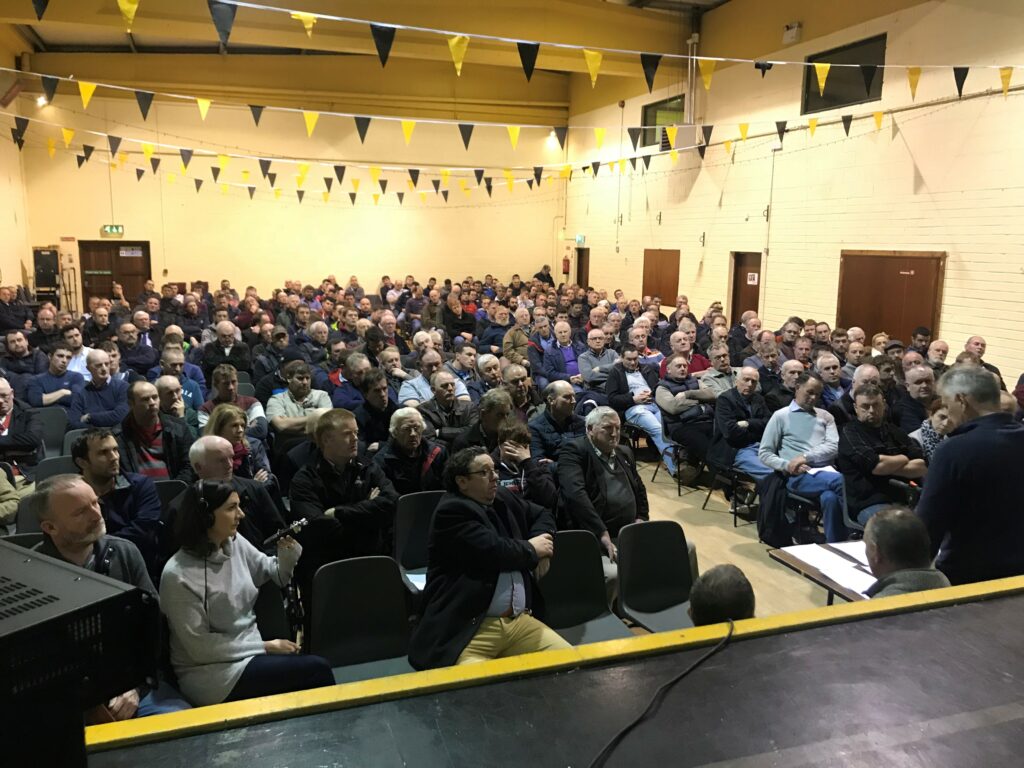It’s hard not to admire the Beef Plan Movement.
In the space of just four short months, this group of farmers has grown from the minnows to 15,000 members.
The group has held public meetings in all but a few counties and it has garnered support from multiple cattle breed societies, some farm organisations and opposition politicians.
Government officials – from Leinster House to Brussels – know who these farmers are and have a general understanding of what they want. That is: a fair and sustainable price for beef.
They have sparked debate – and resistance too.
The country’s meat processors have acknowledged their existence; while some farm lobby groups have shrugged off assertions of any potential challenge they may pose to the status quo.
All in all, they have people talking.
But, what’s next?
History tells us that successful people’s movements are based on the following hallmarks: leadership; mobilisation; and strategy.
So how is the new entity faring on these fronts?
Strongholds
The founders of the movement – Meath beef farmers Eamon Corley and Hugh Doyle – have spent weeks on the road getting their 86-point plan for the overhaul of the beef industry by 2025 into the hands of as many like-minded producers as possible.
They have invited thousands of farmers to be part of the discussion on the movement’s WhatsApp messaging platform.
A national committee and county chairpersons have been appointed and the Beef Plan Movement is now officially registered as a CLG (company limited by guarantee).
Also Read: Beef Plan Movement officially registers as a companySitting in on a meeting of the county chairs in Tullamore last Thursday night (January 10), it is clear that each farmer’s determination to “take back control” of the food chain remains steadfast – but, the group is also very cognisant that its recruitment tactics have to progress as the entity evolves.
Beef Plan spokesperson says: “The day of farmers going to the factories, in single file, to get slaughtered on price is over” pic.twitter.com/O3yH6DNzmr
— AgriLand (@AgrilandIreland) November 7, 2018
From the start the founders set a membership target of 40,000 farmers and, having come more than 30% of the way, the responsibility is now being firmly placed on the shoulders of current members to sign up at least two others under a new townland-by-townland approach.
To date the main support strongholds are counties: Roscommon, Galway and Mayo. Each county has more than 1,000 members.
In addition, county reps are in the process of setting up purchasing groups that will seek out “special deals” on fuel, insurance, fertiliser, electricity, farm hardware, etc. in a bid to build loyalty and trust.
The groundwork is also being laid for the establishment of county producer groups – initially for beef finishers – with the aim of gathering information on exactly what cattle are in every county.
Meaningful plans
The movement is also seeking out independent factories that may be willing to kill cattle on a contract basis.
Idle factories and unused cold stores are on the radar too.
Apparently, some companies have expressed interest in selling the movement’s beef “in large volumes”.
The chairs will also now explore farmer interest in investing in a co-operative for the processing and marketing of the movement’s beef.
But, like all collections of people engaged in a movement, those involved don’t always agree on what action should be taken.
“We have to think outside the box or we are still going to be destroyed. There will be ups and downs; but we have to stick together as a group,” said Doyle.
With multiple subcommittees now being developed and several political meetings on the horizon – Charlie McConalogue, Fianna Fail’s spokesperson on agriculture, attended the group’s public meeting in Co. Donegal this week – the movement is now focused on presenting itself in a “professional” manner.
Casting a wide net
Having collected a contribution fee of €10 from members to fund year one of its development, at the meeting unanimous support from the national committee was given for a motion to bring a suitable public relations firm on board to drive its message.
One wonders if all grassroots members will embrace this approach.
However, with research showing that people’s movements are more successful when they can persuade a significant portion of the public to get behind their cause, it’s clear these farmers are casting a wide net – beyond the confines of front-line farming.
Although this is just a flavour of the strides taken by this tenacious group of farmers – who will undoubtedly face clashes and scrutiny from political forces, corporate elites and some farming counter bodies in the months ahead – one thing is for sure; they are showing no signs of backing down.

